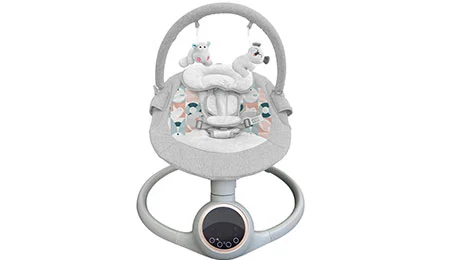During the growth process of infants and toddlers, baby swings are beloved by parents as toys that both entertain and assist in exercise. However, when these products are prepared for export to the EU market, they must strictly comply with a series of rigorous testing standards to ensure product safety and compliance. This article will delve into the testing standards for exporting baby swings to the EU and common safety risks, helping businesses and consumers better understand this field.
Baby swings specifically refer to swing-type products designed for infants and toddlers weighing no more than 9kg or unable to sit independently. It is noteworthy that swings classified as toys under the EN 71-8 standard are not covered in this discussion. This definition helps clarify the specificity and target users of baby swings.
To ensure the safety and compliance of baby swings in the EU market, products must pass rigorous testing according to the EN 16232:2013+A1:2018 standard. This standard provides detailed testing instructions for products intended for the care and use of children—particularly safe baby swings—in adherence to the General Product Safety Directive (GPSD). The testing covers various aspects including chemical, thermal, and mechanical factors, among others, assessing potential risks such as pinching, swallowing, slipping, and choking to ensure the product meets safety requirements on all fronts.

Although there are many benefits of baby swings, their potential safety risks cannot be ignored. Here are some common safety risk points:
Mechanical/Physical Risk:
Insufficient strength and durability or structural design defects may cause infants to fall and get injured while using the swing.
Small parts detaching or being accidentally swallowed by infants pose a choking hazard, especially to for children under the baby swing age of 36 months.
Excessive rope length can lead to strangulation and asphyxiation incidents.
Sharp edges and points may cause cuts, abrasions, and other injuries.
Chemical Risk:
Materials used in affordable baby swings that contain excess harmful chemicals may pose short-term or long-term adverse health effects on infants and toddlers.
Flammability Risk:
Baby swings made of flammable materials can quickly ignite under certain conditions, causing fires and posing a severe threat to infants and toddlers.
Hygiene Risk:
If materials are contaminated with microorganisms or other pollutants during manufacturing, infants and toddlers may experience skin inflammation, infections, and other issues during use.
In conclusion, baby swings must undergo rigorous testing to meet the requirements of standards like EN 16232 when preparing for export to the EU market. Additionally, parents should fully understand the potential safety risks of baby swings and take appropriate measures to prevent them. Only then can baby swings truly become a companion for infants' joyful growth.
This is the first one.